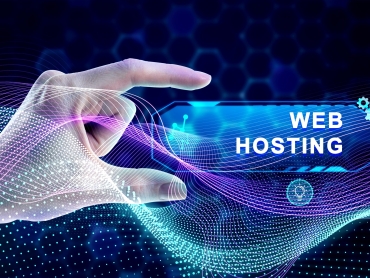In today’s technology-driven world, businesses cannot afford inefficiencies in IT services. Every email, digital transaction, online purchase, and customer interaction depends on reliable IT infrastructure. When IT services fail, customers notice almost immediately—and their trust in the brand is impacted. This is where IT Service Management (ITSM) steps in as a powerful methodology that bridges IT operations with customer satisfaction, ensuring that businesses deliver consistent, seamless, and value-driven experiences.
This comprehensive guide dives into the relationship between ITSM and customer satisfaction, exploring how structured IT processes not only optimize performance but also enhance user trust, improve efficiency, and future-proof business operations. By the end of this article, you will gain a detailed understanding of ITSM, its frameworks, real-world applications, benefits, challenges, and strategies to use it as a tool for elevating customer experience.
What is ITSM?
IT Service Management (ITSM) is the practice of designing, delivering, managing, and improving IT services to meet the needs of both internal users and external customers. Unlike traditional IT support that only reacts to issues, ITSM emphasizes proactive service delivery, structured workflows, and continual improvement.
At its core, ITSM ensures that IT capabilities are aligned with business objectives, meaning IT doesn’t just provide technical fixes—it contributes directly to business performance.
Some of the most widely used ITSM frameworks include:
ITIL (Information Technology Infrastructure Library): The most popular ITSM framework, offering best practices for delivering high-quality IT services.
COBIT (Control Objectives for Information and Related Technology): A governance framework ensuring compliance and business alignment.
ISO/IEC 20000: An international standard for IT service management.
Each framework provides processes and guidelines, but the overall goal remains the same: ensuring that IT services are efficient, reliable, and focused on the end-user experience.
Why ITSM is Crucial in Today’s Digital Era
Businesses today operate in an environment where customers expect 24/7 access, instant support, and seamless experiences. A small IT disruption—such as a slow website, downtime in a mobile app, or delays in payment processing—can lead to frustration, negative reviews, and even customer loss.
Here’s why ITSM has become indispensable:
Digital Transformation Demands: As organizations migrate to cloud platforms, adopt automation, and integrate AI, ITSM ensures smooth transitions and reliable operations.
Customer-Centric Expectations: Modern consumers demand transparency, quick resolutions, and personalized support—all areas ITSM directly enhances.
Data-Driven Insights: ITSM tools provide reporting and analytics that help predict issues before they affect customers.
Competitive Advantage: Companies with strong ITSM practices deliver better user experiences, resulting in higher retention and loyalty.
In short, ITSM is no longer an “IT-only” concern—it’s a business-critical function that impacts every department and every customer.
How ITSM Enhances Customer Satisfaction
One of the biggest strengths of ITSM lies in its ability to transform IT operations into customer-centric services. Let’s explore how ITSM frameworks improve satisfaction:
1. Consistent and Reliable Service Delivery
Customers value reliability. ITSM standardizes processes across the organization, ensuring IT services are delivered consistently and with minimal errors. This creates predictability for users, reducing frustration from unexpected outages.
Example: An e-commerce website implementing ITSM can guarantee stable performance during high-demand events like Black Friday, ensuring customers have a seamless shopping experience.
2. Faster Incident Response and Resolution
Downtime or technical failures can significantly damage brand reputation. ITSM uses automated ticketing systems, escalation rules, and knowledge bases to resolve issues faster. By minimizing disruption, customers feel supported and valued.
Case in point: A bank using ITSM frameworks can resolve mobile banking app outages within minutes, keeping customer trust intact.
3. Proactive Problem Management
Instead of waiting for issues to occur, ITSM emphasizes proactive monitoring and root-cause analysis. By preventing recurring problems, businesses build customer trust and reduce frustration.
Example: A telecom company identifies recurring network issues in a region and fixes the root cause before users file multiple complaints.
4. Enhanced Communication and Transparency
ITSM includes structured communication protocols that keep users informed about service requests, outages, and resolutions. Transparency builds confidence.
Scenario: A SaaS provider notifying customers in advance about scheduled downtime reduces negative reactions and builds credibility.
5. Alignment with Business Needs
ITSM integrates IT services with business goals and customer expectations, ensuring IT evolves alongside market demands. This alignment creates tailored solutions, whether it’s improving mobile app features or offering personalized digital support.
The Broader Benefits of ITSM
While customer satisfaction is a key driver, ITSM delivers multiple organizational advantages:
Increased Efficiency: Optimized workflows reduce duplication of effort.
Reduced Costs: Streamlined operations minimize waste and redundancy.
Improved Compliance: Standardized documentation ensures adherence to regulatory requirements.
Scalability: ITSM frameworks adapt to organizational growth, whether in user numbers or services.
Innovation Enablement: By automating routine tasks, IT teams focus on creative problem-solving and innovation.
Key ITSM Processes That Impact Customer Experience
Not every ITSM process directly interacts with customers, but several play a critical role in shaping user experience:
Incident Management: Rapid restoration of normal service after disruption.
Problem Management: Identifying and eliminating root causes.
Change Management: Structured processes for implementing system updates without causing chaos.
Service Request Management: Efficient handling of requests like password resets or new software installations.
Service Level Management (SLM): Setting clear expectations for service delivery and monitoring compliance.
Knowledge Management: Providing customers with self-service portals and FAQs for quick problem-solving.
ITSM Tools and Technologies
Organizations leverage various ITSM tools to implement these processes effectively. Popular solutions include:
ServiceNow – A cloud-based ITSM platform offering workflow automation.
BMC Helix ITSM – Known for AI-driven service management.
ManageEngine ServiceDesk Plus – A cost-effective tool for SMEs.
Cherwell ITSM – Flexible and customizable for enterprise needs.
Freshservice – Focused on simplicity and user experience.
The right tool improves not just IT efficiency but also the end-user experience, directly contributing to satisfaction.
Measuring Customer Satisfaction with ITSM
To truly assess whether ITSM initiatives are successful, organizations must track Key Performance Indicators (KPIs) such as:
Customer Satisfaction Score (CSAT): Measures end-user satisfaction after service interactions.
Net Promoter Score (NPS): Determines how likely users are to recommend the business.
First Call Resolution (FCR): Percentage of issues resolved on the first attempt.
Mean Time to Resolution (MTTR): Average time taken to fix incidents.
Service Level Agreement (SLA) Compliance: Tracks adherence to promised service standards.
Monitoring these KPIs allows organizations to adjust ITSM strategies for maximum impact.
Challenges in Implementing ITSM
Despite its benefits, organizations face hurdles in ITSM adoption:
Cultural Resistance: Employees may resist structured processes, preferring ad hoc solutions.
High Initial Investment: Implementing ITSM frameworks and tools can be costly.
Complexity: Large enterprises struggle to align ITSM processes across departments.
Skill Gaps: ITSM requires specialized training and expertise.
Integration Issues: Ensuring ITSM tools integrate with existing infrastructure can be challenging.
Addressing these challenges requires strong leadership, training, and phased implementation.
The Future of ITSM and Customer Experience
ITSM continues to evolve with digital transformation trends. Here are future directions:
AI and Automation: Predictive analytics for incident prevention and AI chatbots for faster customer support.
Cloud-Native ITSM: Scalable, flexible solutions that adapt to global organizations.
DevOps Integration: Combining ITSM with DevOps practices for faster innovation.
Employee Experience Focus: Recognizing that satisfied employees provide better customer service.
Hyper-Personalization: ITSM systems that tailor responses based on customer history and preferences.
These advancements indicate that ITSM will play an even more vital role in shaping customer journeys.
Practical Tips for Enhancing Customer Satisfaction with ITSM
Train IT Teams in Soft Skills: Beyond technical expertise, empathy and communication drive satisfaction.
Leverage Self-Service Options: Empower customers with portals and knowledge bases.
Automate Routine Tasks: Free IT staff to focus on strategic initiatives.
Regularly Review SLAs: Align them with evolving customer expectations.
Gather Feedback Continuously: Use surveys and feedback loops to refine IT services.
Conclusion
ITSM is more than an IT framework—it’s a customer satisfaction engine. By standardizing processes, improving reliability, and focusing on proactive service delivery, ITSM directly impacts how customers perceive and interact with a brand.
Businesses that successfully implement ITSM frameworks not only gain operational efficiency but also build loyal, satisfied customers who trust their digital experiences. As technology continues to evolve, ITSM will remain at the center of delivering consistent, transparent, and customer-focused IT services.
For organizations aiming to thrive in the digital economy, investing in ITSM is not optional—it is a strategic necessity.








